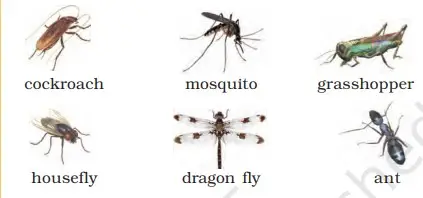Bihar Board Class 7 English Chapter 13 Solutions is available for free here. It covers all question answers of chapter 13 – “The Invention of Vita – Wonk”, from new book – Honeycomb.
“The Invention of Vita-Wonk” is a creative story by the famous author Roald Dahl about the clever scientist Mr. Willy Wonka. In this story, Mr. Wonka tries to make a special medicine that can make people older, after his first invention (Wonka-Vite) accidentally made people too young. To create Vita-Wonk, he collects ingredients from the oldest living things in the world. This chapter introduces students to the power of imagination and how science can seem magical when mixed with creativity. Here we have shared detailed solutions for Chapter 13 – The Invention of Vita-Wonk from Bihar Board Class 7 English Book for free.

Bihar Board Class 7 English Chapter 13 Solutions
Contents
| Class | 7 |
| Subject | English (Honeycomb) |
| Chapter | 13. The Invention of Vita – Wonk |
| Board | Bihar Board |
COMPREHENSION CHECK
From page no: 102
1. Choose the right answer.
(i) Mr Willy Wonka is
(a) a cook, (b) an inventor, (c) a manager.
Ans: (b) An inventor
(ii) Wonka-Vite makes people
(a) older, (b) younger.
Ans: (b) Younger
(iii) Mr Wonka wants to invent a new thing which will make people
(a) younger, (b) older.
Ans: (b) Older
2. Can anyone’s age be a minus number? What does “minus 87” mean?
Ans: No, a person’s age cannot be a minus number in real life. Age starts from zero when we are born and then increases as we grow. “Minus 87” means the person has become so young that they will have to wait for 87 years to be born! It’s like going back in time before your birth.
3. Mr Wonka begins by asking himself two questions. What are they?
Ans:
(i) What is the oldest living thing in the world?
(ii) What lives longer than anything else?
WORKING WITH THE TEXT
1. (i) What trees does Mr Wonka mention? Which tree does he say lives the longest?
Ans: Mr. Wonka mentions Douglas fir, oak, cedar, and bristlecone pine trees. Among these, he says the bristlecone pine tree lives the longest.
(ii) How long does this tree live? Where can you find it?
Ans: The bristlecone pine tree lives for over 4000 years. You can find it on the slopes of Wheeler Peak in Nevada, USA.
2. How many of the oldest living things can you remember from Mr Wonka’s list? (Don’t look back at the story!) Do you think all these things really exist, or are some of them purely imaginary?
Ans: Mr. Wonka’s list includes 4000-year-old bristlecone pine trees, a 168-year-old Russian farmer, a 200-year-old tortoise, and a 207-year-old rat. Some of these like the bristlecone pine trees and tortoises can really live very long, but others like the 207-year-old rat are likely imaginary. No rat lives that long in real life!
3. Why does Mr Wonka collect items from the oldest things? Do you think this is the right way to begin his invention?
Ans: Mr. Wonka collects items from the oldest living things because he believes these items contain the secret to long life. He wants to use this secret to create Vita-Wonk, which makes people older. This is not a scientific way to begin an invention. In real life, scientists would study aging through proper research, not by collecting random old things.
4. What happens to the volunteer who swallows four drops of the new invention? What is the name of the invention?
Ans: When the volunteer swallows four drops of the new invention, he immediately starts to wrinkle and shrivel up. His hair begins to fall out and his teeth start dropping. He quickly changes from a young man into a seventy-five-year-old man! The name of this invention is Vita-Wonk.
WORKING WITH LANGUAGE
1. What do you call these insects in your language?

How do these insects effect your health? Have a discussion in the class.
Ans:
(i) Cockroach – Til chitta
(ii) Mosquito – Machchar
(iii) Grasshopper – Tiddi
(iv) Housefly – Makkhi
(v) Dragonfly – Badi Makkhi
(vi) Ant – Chinti
These insects can affect our health in different ways. Mosquitoes spread diseases like malaria, dengue, and chikungunya by biting us. Houseflies sit on garbage and then on our food, spreading germs that can cause stomach problems. Cockroaches also carry germs and can cause allergies. Ants can contaminate our food.
2. Fill in the blanks in the recipe given below with words from the box.
Shred, cooker, times, tomatoes, half, onion, oil
Easy Palak–Dal
Ingredients:
- One _____.
- One cup dal.
- Two thin green chillies.
- _____ a teaspoon red chilli powder
- Eight small bunches of palak.
- Two _____.
- Salt to taste
Wash and cut the vegetables: _____ the palak. Put everything in a pressure _____. Let the cooker whistle three _____, then switch it off. Fry a few cumin seeds in _____ and add to the palak–dal.
Ans:
- One onion
- One cup dal
- Two thin green chillies
- Half a teaspoon red chilli powder
- Eight small bunches of palak
- Two tomatoes
- Salt to taste
Wash and cut the vegetables: Shred the palak. Put everything in a pressure cooker. Let the cooker whistle three times, then switch it off. Fry a few cumin seeds in oil and add to the palak–dal.
3. A ‘family tree’ is a diagram that shows the relationship between the different members of a family. Fill in the family tree below with names, ages, and other details you think are relevant (you may even stick photographs, if you have them). Put your family trees up in the class.
Ans: Students please do by yourself.
WRITING
1. (i) Make a list of the trees Mr Wonka mentions. Where do these trees grow? Try to find out from an encyclopaedia. Write a short paragraph about two or three of these trees.
Ans: Trees mentioned by Mr. Wonka:
(i) Douglas fir
(ii) Oak
(iii) Cedar
(iv) Bristlecone pine
Douglas fir trees grow along the west coast of North America, from British Columbia down to California. They can grow very tall – up to 85 meters! Oak trees are found in many parts of the world including Asia, Europe, and America. They produce acorns which squirrels and other animals eat. Cedar trees grow in the Himalayan mountains and around the Mediterranean Sea. They have a special smell that keeps insects away. Bristlecone pine trees grow in the mountains of the western United States and can live for thousands of years, making them some of the oldest living things on Earth!
(ii) Name some large trees commonly found in your area. Find out something about them (How old are they? Who planted them? Do birds eat their fruit?), and write two or three sentences about each one of them.
Ans: Some large trees in my area include Neem, Peepal, Banyan, and Eucalyptus trees.
Neem trees are known for their medicinal properties. The Neem tree in front of my house was planted by my grandmother about 50 years ago. Birds like crows and mynas often rest on its branches.
Peepal trees are considered sacred in our culture. The old Peepal tree near our temple is probably over 100 years old. Its leaves make a special rustling sound even when there is no wind.
Banyan trees grow very wide with their hanging roots. The huge Banyan in our park provides shade to many people. Birds and monkeys enjoy eating its small red fruits.
Eucalyptus trees grow very tall and straight. They were brought to India from Australia. The oil from their leaves is used in cough medicines and is good for breathing problems.
2. Find out something interesting about age, or growing old, and write a paragraph about it. Following are a few topics, suggested as examples.
- The age profile of a country’s population — does it have more young people than old people, or vice versa? What are the consequences of this?
- How can we tell how old a tree, a horse, or a rock is?
- What is the ‘life expectancy’ of various living things, and various populations (how long can they reasonably expect to live)?
Ans: India is a country with a young population. Most of our people are under 30 years old! This is different from countries like Japan, where many people are elderly. Having more young people means India has many workers for factories and offices, but we also need to create more jobs and schools.
As people get older, their bodies change. Hair may turn gray or white, skin gets wrinkles, and bones become weaker. But older people have something very valuable – wisdom and experience! They have seen and learned so much in their lives. Different animals have different lifespans.
Dogs usually live for 10-15 years, elephants for about 70 years, and some turtles can live for over 100 years! Trees live even longer – the oldest bristlecone pine is more than 4,000 years old. It was already growing when the Egyptian pyramids were being built!
